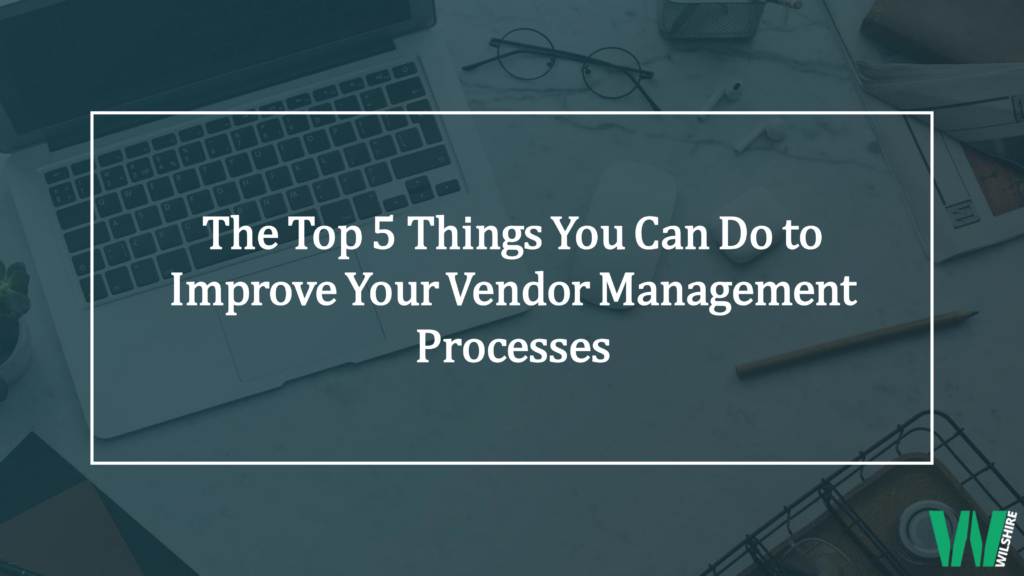Health care providers spend millions of dollars each year on vendors that support their revenue cycle. Proper vendor management is an important part of a high-functioning revenue cycle department. In this post we’ll focus on techniques to manage vendors who provide collection and recovery services on a contingency basis.
A well-functioning, mature Vendor Management (VM) program ensures your organization receives the value it expects from each vendor, invoices are accurate, duplicate claims aren’t made for the same account/payment, and accounts don’t become “lost” in a black hole.
Strong Vendor Management
Five key steps are required to form the infrastructure of a strong VM program:
1. Ownership:
One of the first steps is to identify who will own your VM program. In a large organization it might be a separate unit, while in smaller organizations responsibilities may be allocated among several different areas.
2. Vendor Agreements:
It’s important to be familiar with each agreement and its terms. Focus not only on the fees but any stated service levels, penalties if SLA are not met, and payment “credit windows” that determine when a payment qualifies for a fee.
3. Performance Monitoring (Reporting, Meetings, Auditing):
Reporting
This seems obvious but monitoring a vendor’s performance is not as simple as it may appear. If you’re using the standard reports your vendor provides, that’s a good place to start but be sure you’re getting everything you need. Vendors tend to focus on what they collected, not what they missed. Be sure the reports are consistent between vendors so their performance can be easily compared.
Implementing a new “net back” report (a report comparing collections, net of fees, to adjusted net placements) for a large academic medical center allowed the organization to compare multiple vendors providing similar services at different rates. It confirmed the vendor charging a slightly higher fee was outperforming the others, bringing in an additional $200,000 to $300,000 annually after fees.
Meetings
Hold regular meeting with each vendor to review reports, performance and any system or workflow changes. We suggest meeting monthly but quarterly meetings can be used for established, well performing vendors.
Quality Audits
If you’re performing quality audits on your own staff, you should be performing it on your vendors. Key targets should be based on the SLA’s included in your vendor’s agreement. If the agreement is silent or only provides limited targets, spend some time with each vendor to develop these expectations together. Each type of vendor (Early Out, Bad Debt, and Recovery) will require different performance expectations.
4. Inventory Reconciliation:
This step is mandatory if you want to ensure all accounts are properly accounted and assigned. A consistent practice of monthly reconciling assigned vendor accounts reduces issues with invoices, ensures accounts are not assigned to more than one vendor or appear as assigned in your host system but not owned by any vendor – the “black hole.” This step helps avoid multiple groups working the same account, creating inefficiencies.
Performing reconciliations for a large health system out West, we identified a problem with the process vendors used to return accounts, allowing the organization to correct the process and properly assign hundreds of accounts that had fallen into the “black-hole.”
5. Invoices:
No one enjoys reviewing invoices, but it is a necessary evil of any VM program. It ensures fees are earned, credited to the right vendor, and multiple vendors aren’t seeking credit for the same payment. Check contract terms such as “payment windows” and make sure that any takebacks are offset correctly.
There is a lot to running a VM program but don’t be overwhelmed. Start by taking one step at a time and utilizing your vendors to provide the support required in key areas. For example, most vendors already have standard performance reports they prepare for their clients. If they currently don’t provide everything you should have, ask for them to be updated. In addition, if you are not performing reconciliations today begin to provide each of your vendors a list of assigned accounts at the end of each month and require them to give you a reconciliation report. For many vendors, these are items they already provide to other clients and can quickly provide them for your organization.
A fully functioning Vendor Management program is an essential part of a well-run revenue cycle department. It ensures your organization is receiving the value it expects, the performance it demands, and consistent monitoring required for a long and productive relationship.
Don’t hesitate any longer to get a VM program up and running or improve on what you already have in place. The Wilshire Group would love to talk to you about your VM Program and what personalized steps can be taken for your organization. Contact Us to set up a call today.
